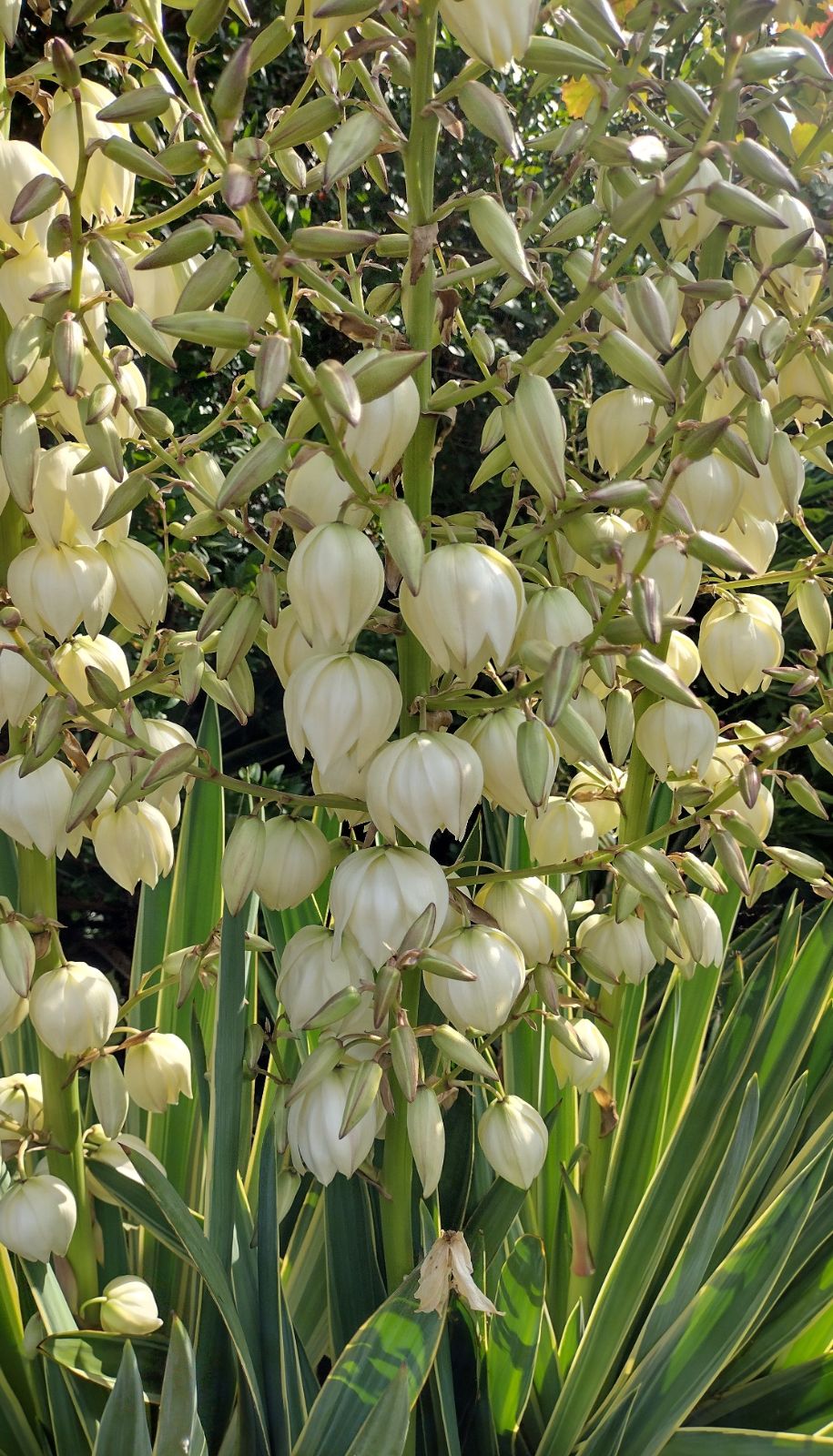Yucca gloriosa
Credits
Article from Bean's Trees and Shrubs Hardy in the British Isles
Recommended citation
'Yucca gloriosa' from the website Trees and Shrubs Online (treesandshrubsonline.
Genus
An evergreen shrub up to 6 or 8 ft high in this country, sometimes branched, but oftener consisting of a single, thick, fleshy stem, crowned with a cluster of numerous stiff, straight, spine-tipped leaves 11⁄2 to 2 ft long, by 2 to 3 in. wide, glaucous green when young, quite glabrous. Flowers produced from July to September, crowded on an erect, narrowly conical panicle, 3 to 8 ft high, and 1 ft wide. The flowers are pendulous, creamy white, sometimes tinged with red or purple outside, the six parts of the perianth oblong-lanceolate and pointed. The fruit is an oblong capsule 2 to 21⁄2 in. long, six-ribbed; seeds glossy, 1⁄4 in. long.
Native of the coast region of eastern N. America, from S. Carolina to N.E. Florida, often on sand-dunes. It was cultivated by Gerard in his garden at Holborn late in the 16th century, and has long been a favourite in the gardens of south and western Britain. Even now, in the 20th century, gardens can show no more striking a feature than a group of plants in flower. It is closely allied to Y. recurvifolia, but easily distinguished by the straight, rigid leaves. It is not so common as that species, and although quite hardy in not being affected by frost, is apparently more subject to decay and injury by winter damp and snow. Also, as Parkinson put it, it flowers ‘now and then, but not every yeare’ and is inclined to develop its spikes so late in some seasons that the flowers fail to open.
Footnotes
Gerard obtained his plant from Thomas Edwards, an apothecary of Exeter. Its original provenance is unknown, but the likeliest guess is that it came from Roanoke Island, which had been explored in the 1580s and was the site of the first but short-lived English settlement in what is now the United States. Gerard’s plant had not flowered by the time he published his Herball, but it did so later. It died when an attempt was made to move it to another garden after his death. But he had given a propagation to Robin, the French king’s gardener. Parkinson had a plant, and gives a good account of the species in his Paradisus.
'Medio-striata'
With a whitish stripe down the centre of each leaf.'Nobilis' ('Ellacombei')
Leaves persistently glaucous, the outer ones recurving and sometimes twisted on one side, not or scarcely ribbed. Petals red on the back. It approaches Y. recurvifolia in habit. The original plant was said by Canon Ellacombe to have been obtained from Loddiges’ nursery at Hackney by his father. It is a fine yucca, perhaps from Y. gloriosa crossed with Y. recurvifolia (Y. ellacombei Bak.; Y. gloriosa nobilis Carr.).'Superba'
Leaves very rigid, glaucous, 2 to 2{1/4} in. wide. Panicle denser and shorter than normal. Flowers white. Bot. Reg., t. 1698 (Y. superba Haw.; Y. gloriosa var. superba (Haw.) Bak.var. plicata (Carr.) Engelm.
Synonyms
Y. gloriosa plicata Carr
'Variegata'
Leaves striped with dull yellow.

